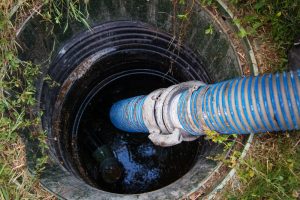
When you have a grease trap you need to maintain it. If you don’t you will require a Grease Trap Service more often. It’s important to schedule proper maintenance with a reputable company like Spring Septic to be sure they do a quality job for you.
We provided seven tips for more efficient grease trap maintenance. For health and environmental purposes, it is important to keep fats, oils, and fats (FOGs) out of the sanitary sewer system by using a grease trap. Most jurisdictions mandate that grease traps be routinely checked and washed. The minimum required cleaning of the grease trap may vary, but the general rule of thumb is that the grease trap should be cleaned when it is 25% complete. In order to prevent an institution from reaching the target, it is recommended that grease traps should be washed annually, weekly or as needed.

Grease traps must be cleaned annually on the basis of strict regulations, in particular in foodservice establishments. A licensed professional must take care of these annual cleanings, but you can still do a few things to ensure that your grease trap is running smoothly. Check out our seven tips to help you avoid grease trap issues!
- Be sure to check that your grease trap is correctly installed. If there is little or no grease in the trap, it is probably incorrectly installed, which means it’s time to call a professional.
- Garbage disposals should not be placed in front of the grease traps because they allow the grease trap to be filled with ground food sludge. Rather, make sure they’re mounted behind grease traps!
- Ensure you have strainers installed in all your sinks, dishwashers, and floor drains. This will prevent large solids from entering grease traps like rubber gloves, lids, caps, and rocks should never be stuck in grease traps. You should then make sure the strainers are in position at all times.
- Do not dispose of the fat by intentionally pouring it down the drain. Pour it into an Ace Grease recycling container to be picked up when the grease trap is pumped. Be sure to pour it into a metal bucket to avoid putting hot grease in a plastic container.
- Make sure that your grease trap is the right size for your needs.
- Scrape as much food as possible into the trash to avoid waste disposal.
- Reduce your responsibility by keeping records of when and how much FOG is being received. A log that washed the grease traps, when it was finished, and where the stuff had come out of the trap. Spring Septic provides these reports following the service, and turn FOG into useful items that are used to make plastics, soaps, livestock feed, and biodiesel gasoline.
Grease Trap Service & maintenance can be set up as a standard service schedule that works for you to ensure that you follow local, state, and federal regulations. Contact your local grease trap company today if you need help maintaining the 7 areas for your grease trap.